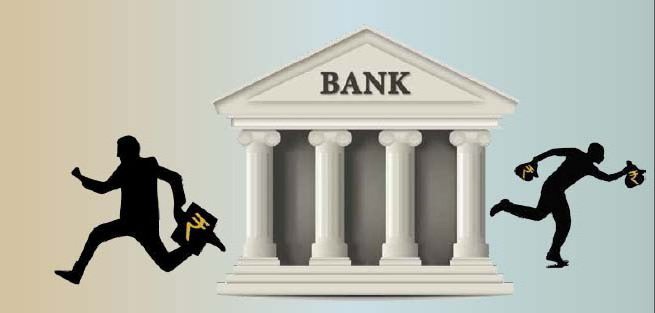Nobody likes to be a debtor. But not always own finances are enough to buy a treasured thing. And in this regard, you have to borrow either from friends or in financial institutions, for example, in banks.
In this article, we will examine in detail what debt is, what types of debt exist, and how to quickly pay off debt to the bank.
The essence of the concept
The word “duty” is quite often found both in colloquial speech, and in official documents, as well as fiction.
If you ask a soldier “What is duty?”, Then he will most likely talk about the meaning of the phrase “military duty”. It implies the obligation of every man to serve in the army, to learn how to protect himself, his family and his homeland.

The concept is also used in the financial sphere. For example, a banker will give the following answer to the question of what is debt, the following answer: this is the debt of the borrower on a loan to the bank. In other words, debt is a commitment made to those who take a loan.
What characterizes debt?
Any concept can be defined from different angles, revealing its essence. All types of debts listed below, except the last, have the following parameters:
- Amount due.
- Maturity.
- Profit lender.
- Repayment conditions.
- Measures that can be applied in case of arrears and non-payment of debt.
The total amount of debt can be very different: from 1 ruble to trillions of dollars (as, for example, the United States). The size of the loan expresses the borrower's need for money. If an individual wants to borrow money, this is one amount, and if an international corporation, the credit limit will be much higher.
The size of a loan can be influenced by many factors: trust in the borrower, availability of collateral, guarantors, etc.
The term of a debt, that is, the period of time that is provided for debt repayment, varies over a fairly wide time range: from a month to decades. This condition depends entirely on the lender himself, who expects how long he is ready to provide the borrower with his money.
The lender's profit is characterized by the interest rate that he expects to receive from the borrower. In fact, this income should be higher than if the creditor used his funds differently, for example, put on a deposit or invested in some business.

And for the borrower, the percentage of the debt means the fee that must be paid for the use of credit (borrowed) funds.
When issuing any loan, the parties must discuss the terms of its repayment. This may be monthly payments, tranches or other operations related to the transfer of funds from the borrower to the lender.
Also a necessary condition are those measures that can be applied by the creditor in case of untimely payment of a part of the debt. Often these are fines, pennies or other charges on arrears.
Types of debt
Understanding what debt is, let us dwell in more detail on its types. Be it a simple person or legal entity, from time to time they come across this concept.
The following types of debts can be distinguished:
- National;
- municipal;
- corporate;
- personal;
- public;
- moral.
Next, we will analyze each of the above categories of debt.
National (state) debt
The concept of national debt is used in statistics. As you already understood, not only a person can borrow, but an entire state represented by his government.On a national scale, the country's internal and external obligations are taken into account.

Public debt is divided into:
- Capital.
- Current.
- External debt.
- Interior.
Capital debt equals the sum of all outstanding debt obligations as well as accruals and interest thereon. Typically, the amount of such debt indicate a specific date.
Current debt
If we talk about current debt, we mean the amount of obligations for those debt securities, the maturity of which has already come.
Depending on who the government of the country owes, they allocate external and internal debts of the state. The first is characterized by debt to its own population, as well as legal entities working inside the country.
The second is an expression of obligations that need to be paid to external investors, creditors, etc. For example, Russia's debt to external creditors as of January is about 515 billion US dollars.
Practice shows that the lion's share of the total debt of the state to external creditors consists of obligations to international banks.
Municipal
A territorial community headed by local government can also borrow. In this case, the total amount of such obligations will be called municipal debt. A prerequisite is a confirmation of the debt by the municipal property, which is available in the treasury.

Such debts may exist in the following forms:
- Loan agreement or agreement.
- Loans that appeared due to the issue of securities.
- Contract of receipt budget loan.
- Warranty Agreement.
The life of a municipal debt cannot be more than 10 years. Local authorities are responsible for this.
Corporate
This type of debt characterizes the debt of private companies in both the domestic and foreign markets. Corporate debt can be divided into several types. Depending on the type of organization, commitments to:
- financial corporations;
- non-profit associations.
Depending on the location of the lenders, there may be internal or external debt.
This indicator is often used to compare the effectiveness of doing business with companies in a country. For example, according to official statistics, today China's external corporate debt is about 160% of the country's GDP. This is because Chinese companies seek to buy foreign competitors and for this they take loans from international credit organizations.

For comparison, it can be noted that during the 2008 global financial crisis, Russia's corporate debt amounted to 300 billion US dollars, which corresponded to only лишь of the state’s GDP.
Personal
Personal debt is the debt that an individual has. It can be both official obligations and not documented agreements between several people.
Consumer debt to banks is just the first type of debt. For example, you took a loan of 10 thousand rubles. From that moment, you have an obligation for this amount to the creditor (the financial institution that issued the loan to you).
Until you repay it, you will remain a debtor. Monthly, the total amount of debt may increase by the amount of interest or arrears. In the event that you repay the loan faster or according to the appropriate schedule, the total amount of debt will decrease.
If you do not take into account debts to banks, you can have debts to the state, firms, as well as individuals.
How to quickly pay off a debt to a financial institution?
By concluding a loan agreement with a bank or other financial institution, the borrower assumes the obligation to fully repay the loan within the specified period.But it often happens that a person for one reason or another is not able to make another loan payment on time.
And all this entails the emergence of overdue debts and, as a result, a furious overpayment, which is able to raise the issue of bankruptcy with an edge. Briefly look at some tips on how to learn how to quickly return private debts.
The most important thing is to correctly calculate your strength. You cannot borrow such an amount of money that you will not be able to repay within the deadlines set by the lender.
Take the amount of your monthly income, subtract from it the cost of living and the average amount for utility bills. Take away additional funds for mandatory expenses. As a result, you will see the amount that you can monthly pay to the creditor.
In addition to making such a payment, try to save 10-20% of its amount in the piggy bank. This approach is especially important for long-term lending. It’s hard to predict your income and expenses for 2-3 years. And with the help of such a secret, you can create a reserve for a rainy day.
Below we consider a type of debt that cannot be compared with those listed above. Its essence lies not in the material but spiritual obligations of man.
Moral duty
In this case, no cash loans or credits are meant. Under moral duty understand the moral standards that must be observed by all people who want to live in society.
After all, man is a social being. From time to time, each of us has to interact with our own kind.
We can distinguish the phrase "sense of duty", so often used in our oral speech. It characterizes the level of development of feelings that make you think not only about yourself, but also about other people.
In this case, the word “duty”, which was used repeatedly in a conversation before that, cannot be applied to debt. After all, any obligations imply forced execution, even if a person does not want this.

A sense of duty helps to do good things without coercion, by inner motivation. Highly moral things that depend on the corresponding feeling include:
- Selfless help.
- Patriotic duty.
- Parental duty.
- Help for elderly and sick people.
- Worker, official duty.
- Courtesy and gratitude.
It is necessary to cultivate this feeling within oneself in order to learn to possess all those qualities that are listed above.

